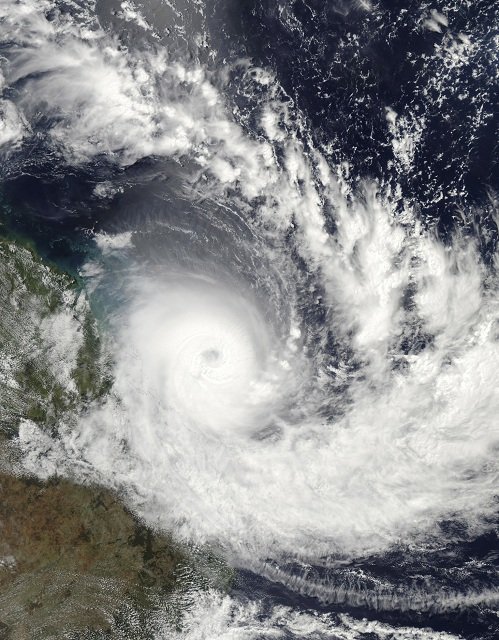A fast-burning wildfire called the Mountain Fire swept across a portion of Ventura County, California, northwest of Los Angeles, on November 6, 2024, Wednesday. It spread quickly, threatening thousands of homes and forcing residents in multiple communities to evacuate.
The Outbreak of the Mountain Fire
The fire erupted in the morning, reportedly 15 miles north of Thousand Oaks, and spread rapidly due to strong winds and dry conditions. By evening, it had charred more than 14,000 acres and threatened at least 3,500 homes. Firefighters made strides in battling the blaze but still had it contained at 0 percent by Wednesday night, leaving many in fear of what might come next.
Not only the Mountain Fire, but other previous fires along the Pacific Coast Highway in Malibu have consumed at least 40 acres and destroyed a seaside home. These fires are just part of the larger fire emergency still raging in the area, fueled by fierce winds that have complicated firefighting operations.
Firefighting struggles amid high winds
Fire officials described the scene as extremely intense. “This fire is moving in a very dangerous manner,” said Trevor Johnson, a fire captain. “The fire is running very fast, and it’s tough to get a foothold.” Winds were gusting up to 80 mph, complicating efforts to contain the fire and threatening to spread it even further.
Strong winds grounded helicopters and fixed-wing aircraft, leaving the firefighters to battle the flames from the ground. With dry ground and strong winds, the fire leaped from hilltop to hilltop, making it very challenging and unsafe to contain.
Catastrophic Impacts on Communities
Flames spread rapidly, causing entire houses in several neighbourhoods to burn down. Viewed from aerial footage, dozens of homes were on fire, and embers scattered all across the hillsides with lightning speed. Commercial flights revealed the grim sight of the fire’s smoke.
Despite hospitalizing some residents due to smoke inhalation, firefighters reported no major injuries by evening hours. Firefighters issued evacuation orders to several communities, prompting residents to seek safety. The Ventura County Fairgrounds served as an evacuation center for large animals. Ventura County Animal Services received the smaller animals.

Evgeniya Loutt, who is 22 years old, is also among the evacuees. She described her emotional experience when their family was asked to evacuate their place. “I have digested it emotionally quite well,” she said, considering the unrest the situation caused and realizing that she has no power over it. “Whatever happens, it’s a loss we have to accept,” she said.
Refuge in Shelters
Camarillo’s evacuation shelter offered sanctuary from the tempest. It was relatively calm. Volunteers dispensed food to evacuees who came in earlier in the day, while others trickled in during the afternoon. American Red Cross volunteers worked through the night, dispensing both medical care and meals to those in need.
One of those evacuees, April Laycock, reports how she and her boyfriend received an evacuation notice during a doctor’s appointment. “We didn’t know where to go first, but we eventually found this place,” Laycock said. “The cats coped with the evacuation better than the dog did—it was very upset!”
It also remained open at night, with staff working around the clock to ensure residents had no alternative place to go.
A Community in Crisis
While the fire continued to spread, FEMA authorized federal dollars to aid in the firefighting efforts, providing all the necessary equipment and resources. However, as the fire’s size increased, so did the burden. The wind, coming from above, was too strong to control the flames, pushing the emergency responders to their limits.
Dustin Gardner, the Ventura County Fire Chief, described the fire conditions as “brutal,” comparing them to some of the region’s most devastating fires, such as the 2018 Woolsey Fire. The combination of low humidity, dry conditions, and wind created an ideal environment for this wildfire to thrive.
Evacuations and Power Outages
As flames edged closer to major highways, such as Highway 101, local authorities struggled to keep up with evacuation orders. California Highway Patrol issued mandatory evacuation orders south of Highway 118 after the blaze jumped the road and moved toward residential areas such as Camarillo, with a population of about 71,000.
About 70,000 individuals in Southern California faced power cuts. Broken electrical lines and fire risks cut off electric supplies in certain areas, especially Ventura County. Locals issued alerts to evacuate or prepare for power line shutdowns in anticipation of fires caused by electrical-related gear.
The Future
On Thursday morning, the fire crews were fighting Mountain Fire day and night but very pessimistic about their ability to effectively contain it. The winds were still at high speeds, and firefighters could only hope that the fire would not advance any further toward residential and commercial zones. Authorities shut down all local schools and advised people to avoid the fire zone.

Recovery in the county will be long and painful. Most residents worry about whether their homes will survive and how to start over. Amidst destruction, there lies hope as well. Firemen, volunteers, and residents begin uniting even as the community faces the biggest catastrophe ever.
Conclusion
The Mountain Fire reminds us of all about how vulnerable the communities of Southern California are to wildfires. Unpredictable winds and dry conditions can easily spread fires like this one, threatening lives, homes, and livelihoods. While firefighting crews fight the flames, it will take months for Ventura County to heal totally from the impacts of this fire.




